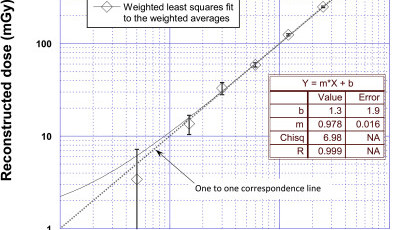SMD resistors as dosimeter during nuclear calamities
on

Researchers from the North Carolina State University have developed a new technique to assess the exposure to radiation within an hour, through the use of SMD resistors in modern electronics. The method can be used when assessing medical cases in the event of a radiological disaster.
"If there is a large radiological event in a populated area, it would be difficult or impossible to treat everyone who could potentially have acute radiation syndrome," says professor Robert Hayes. "You’d need to be able to figure out who was exposed to enough radiation to require treatment".
The research is based on testing (crystalline ) insulators in SMD electronics, as is used in smartphones and wearables. The technique can accurately assess the exposure of an individual in about an hour, says Hays. The earlier methods could take weeks.
"Given that health providers have a one- to two-week window to start treating victims of acute radiation syndrome, the technique should be sufficient to identify which patients require the necessary care," says Hayes. In addition it could help the authorities determine which geographic areas are most affected by the radiation.
The technique requires that the insulator is removed from the device and cleaned. The sample is subsequently placed in a luminescence reader, which collects the spectrum related to the number of electrons that are in the flaws that are inherent in the crystalline structure of the sample. The spectral data is then entered into an algorithm that calculates the radiation exposure of the sample.
"This technique requires specialised equipment and expertise, so it’s not something most locales would have on hand," according to Hayes. "But labs like mine could run the tests and provide the authorities with good data very quickly”.
The researchers think that it can function as an additional instrument for fast dosimetry during nuclear calamities.
Hopefully this technique and others won't be necessary in the future.
Source: Radiation Measurements.


Discussion (0 comments)